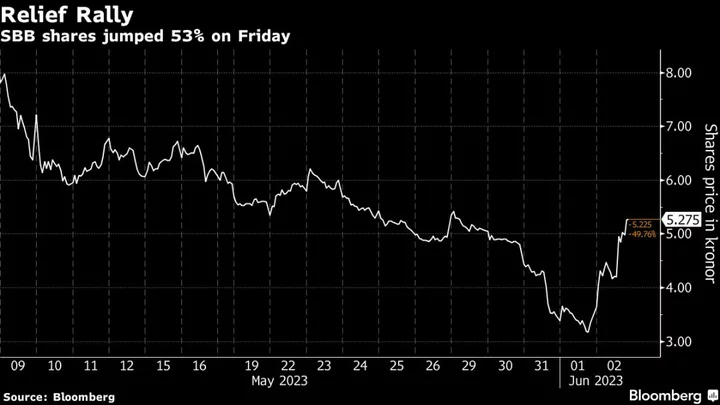As extreme weather wreaks havoc on crops in the Americas and North Africa, Europe’s breadbasket is thriving, with ample wheat harvests keeping global food costs under control.
Across northern and eastern Europe, fields are abundant after plentiful spring rain. The strong outlook for the world’s top wheat shippers has helped prices fall to less than half of last year’s record highs, buffering the impact of drought in other growing regions and the shortfall wrought by the war in Ukraine.
This bodes well for lowering food-import bills and could help keep inflation in check. Still, much hinges on June weather, and tight global reserves mean markets remain on edge.
“It’s still a long road to harvest,” said Sebastien Poncelet, senior analyst at Paris-based Agritel. “But for now the situation is OK.”
So far, signs are positive. The blockbuster European crop could push global wheat output to new records in 2023-24, the US Department of Agriculture forecasts. More than 90% of France’s soft-wheat has been rated “good” or “very good,” the best in more than a decade, and the government projects the bloc’s total output at 131.5 million tons this year — about 6% above the five-year average.
Vegetation is “really nice” after April and May rains, and sunshine is now arriving, said Philippe Heusele, General Secretary of French growers group AGPB. Cool, wet weather also put German crops on good footing, said Johann Meierhoefer, Agriculture Division Head at farm lobby DBV.
In Romania, production could increase by 13% in a rebound from last year’s drought, according to Agritel. Ricardo Luis, who oversees a 5,000 hectare (12,355 acres) farm in the south of the country, is optimistic. If it rains soon, he said, “the situation in some areas can pass from good to very good.”
Russia’s harvest could also outpace its average by 7%, though production won’t top the country’s 2022 record, said Andrey Sizov, Managing Director at agricultural consultant SovEcon.
According to Mikhail Bebin, an analyst at agribusiness GrainRus, wheat fields have sprouted 900 to 1,000 stalks per square meter, the same as last year. In tandem with Russia’s large wheat reserves, 2023-24 exports could hit an all-time high.
Even so, world wheat inventories will shrink for the fourth year in a row — risking a price rebound later. Russia’s invasion of Ukraine has created major setbacks, as shrinking profits and disruptions in exports have forced farmers there to reduce plantings.
Drought in Spain is also a worry: rainfall this year is the lowest in decades, leaving some fields suitable only for livestock grazing. And in France, a soggy spring could promote crop disease, Agritel’s Poncelet said.
The EU harvest begins around July, meaning weather over the next few weeks will be crucial. In Russia, spring wheat has only just been sown.
If either Russia or the EU experience unexpected weather, “it changes the entire landscape,” Dan Basse, president of consultant AgResource, said at the GrainCom conference in Geneva this month.
Author: Megan Durisin and Áine Quinn









